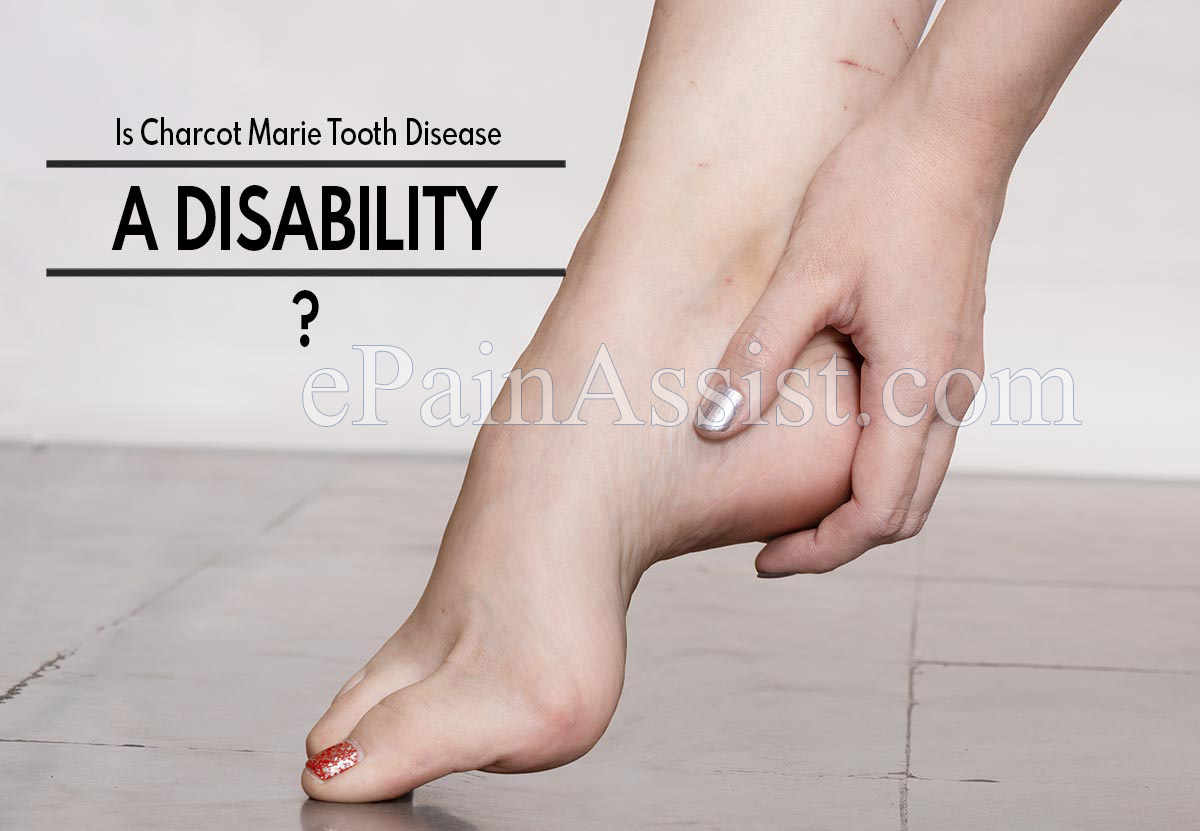Is Charcot Marie Tooth Disease A Disability?
Charcot Marie Tooth (CMT) disease is a common hereditary condition that leads to motor nerve disability. The motor nerve is responsible for controlling voluntary muscle movements of the extremities. This results in the progressive weakening and wasting of leg muscles. The symptoms associated with Charcot Marie Tooth disease are high foot arch that results in pain on walking and standing, bilateral foot drop (problem elevating the forefoot due to which the foot drags on the ground) and eventually, the disease may spread to the arms and hands that results in loss of dexterity.(1)

Charcot Marie Tooth is also associated with increased emotional stress due to lack of coping in the day to day activities. They require more rest during physical activities and lack alertness in behavior as they are prone to being clumsy. They have to deal with frequent accidents, such as ankle sprain or falls and they react slowly to things that are said or done. This may lead to children being picked and teased at school, treating them as outcasts and outsiders, difficulty in thriving at normal professional arrangements, and they have to deal it daily as they are mostly slow at important tasks. The higher requirement to rest and pain add to their disability. The disease may affect the choice of profession of a young person, severely impacts and slows the important activities, increases the need for help and assistance in daily activities and leads to distress that is similar to other chronic diseases. Therefore it is a longstanding and lifelong disability.(2)
These physical challenges limit a person from performing their daily activities at home and also on the work front. Luckily, the American with Disabilities Act (ADA) benefits people with Charcot Marie Tooth as the employers are supposed to accommodate disabilities and protect the jobs of people with such disabilities. They also have an option of changing jobs, working part-time or working from the comfort of their homes. This prompts people with Charcot Marie Tooth to live an active and fulfilling life as they can pursue their educational and career goals.(3)
The disease has no cure; however, significant improvements can be seen with early intervention including surgery, physical therapy and use of orthotics to assist in walking. People who have been diagnosed with Charcot Marie Tooth disease and those who have symptoms severe enough that it has prevented them from joining work for at least a year can apply for Social Security Disability (SSD) or Supplemental Security Income (SSI) benefits. Following this, the Social Security Administration (SSA) retrieves the medical records for evaluation of eligibility of benefits. The medical history should be supported by nerve conduction testing results, statements of doctors clearly stating whether the disease affects the working ability and whether medications are effective in managing nerve pain.(1)
Obtaining an SSD or SSI benefit can be a hassle; the requirements of each medical condition are mentioned in the ‘Blue Book’ and the listing for peripheral neuropathy and Charcot Marie Tooth disease is 11.14. In order to obtain a disability benefit the person must prove that they have severe and ongoing problem with two extremities (either both legs or arms, or an arm and a leg) that leads to prolonged difficulty in walking, standing, getting up from a seated position, using arms and hands to their full potential. The SSA will look for inconsistencies in all the documents submitted and the disability form may also get rejected. However, it is important to appeal for any denial of the disability claim since Charcot Marie Tooth is a progressive disease that worsens with time and awaiting the next disability review might actually worsen the condition and lead to increased disability.(1)
Residual functional capacity might be checked that is noted while performing daily basic work tasks when the disability claim is not automatically accepted based on disability listing. Upon examining walking, standing and looking for foot drops, the SSA can determine a person for sedentary work.(1)
Also Read:
